Fonderies Minatures SNCASO Vautour IIN
I look at these pictures and am completely amazed I managed to arrive at the point with this godawful kit that I had a model I would share with anyone else.
When one considers that in 1945, the French aircraft industry - like the rest of France - was devastated by the Second World War, it is remarkable that by the mid-to-late 1950s the industry was creating world-class military aircraft like the Mystere, the Super-Mystere, the Mirage, and the Vautour. The fact that virtually all national aircraft industries had been forced to start over in 1945 with the advent of jet propulsion perhaps evened the field, but the second-generation French jets were every bit the equal of their American and Soviet competitors, and light years ahead of what was by then coming out of Great Britain following Duncan Sandys' 1957 "brain fart" in which he determined that there was no longer a need for manned aircraft in an age of guided missiles.
The Vautour, the subject of this review, is perhaps the least well-known of the aircraft listed above, but that in no way means that it was not worthy of inclusion in that list. The French manufacturers were either governmental (SNCASO and SNCASE) or privately owned (Dassault, Breguet, etc.). Both types of company had excellent design teams; however, the management of the government firms tended to be more bureaucratic, with all the negative connotations one can put to that term. However, perhaps more important to the Vautour's abbreviated production life is the fact that it was so good, it threatened sales by the U.S. aviation industry to its "captive audience" in NATO, which made the Vautour the victim of "procurement politics" in which the U.S. government, through its Military Assistance Program, "dumped" the Republic F-84F - a far less-capable multi-role airplane - at prices and quantities with which the Vautour could not compete
In July 1951, the Armee de l' Air issued a requirement for an advanced warplane capable of undertaking the all-weather interceptor, tactical attack and high/low-level bomber roles.
SNCASO, which had already created a "Vautour I", the S.O.4000, which was radically underpowered and aerodynamically "first generation", decided that drastic redesign could transform the S.O.4000 into a model that could satisfy this requirement. The result was the S.O.4050 "Vautour II" project.
The redesign included swept wings, wing-mounted engines, and the only other "bicycle" landing gear to be used operationally by any airplane other than the Boeing B-47. The S.O.4050 was successful, and 3 prototypes were ordered, according to the three roles required. The sub-types, which possessed 90% commonality, were designated Vautour A, a single-seat tactical strike aircraft; the Vautour B, a 2 seat medium-range bomber; and the Vautour N (nuit- night, a 2-seat all-weather interceptor.
Prototype 001 was built as a two-seater, though it was not an actual "N" prototype. The first flight was October 16, 1952, piloted by Jacques Guignard, chief test pilot of SNCASO, at Meulan-Villaroche air field. In May 1953 it was equipped with the 6,175 lbs. thrust Atar 101C.1 engines. Flight tests led to the addition of a ventral fin, which became standard for all later Vautours.
On its thirtieth flight, June 30, 1953, Vautour-001 became the first two-engined, two-seat aircraft to exceed the speed of sound in Europe. The Vautour-001 was revealed in flight to the public at the 1953 Paris Airshow, where it demonstrated a climb of 34 degrees to 43,000 feet, and in descending, broke the sound barrier for the first time in public in Europe.
During further tests at the CEV, the "001" reached an altitude of 45,000' and a level maximum speed of 0.96 Mach. In dives, the prototype exceeded Mach 1.03. The prototype was modified with a dorsal fairing connecting the rear of the cockpit with the leading edge of the vertical tail surface, which later became standard on all later Vautours. The "001" prototype was exhibited to NATO, including a very senior American delegation, which was very impressed. The Belgian Air Force was looking for the Meteor N.F.11 replacement. Eventually they chose the Canadair Cf-100 Mk.5.
The Vautours' Contemporaries:
The Vautour's contemporaries in the categories of attack and light bombers were: The English Electric Canberra B.I.8 & B.2 and the Martin B-57; the Ilyushin IL-28; the Douglas A-3 Skywarrior and B-66 Destroyer; the Blackburn Buccaneer S.1.
The Vautour IIN's contemporaries were: The Avro-Canada CF-100; The Yakovlev Yak-25/Yak 27; the deHavilland Sea Vixen; the Gloster Javelin. It is interesting to note that the Vautour IIN outperformed all of these aircraft in the interceptor role.
Into Production:
In late 1955, the Armee de l'Air issued an initial order for 480 Vautours: 300 IIA srike aircraft, 40 IIB light bombers, and 140 IIN all-weather fighters. Unfortunately, budget limitations and political factors intervened to cause a drastic cut in orders, reducing the initial order to 360 aircraft - 220 IIA, 100 IIN, and 40 IIBs. Competition among the French manufacturers, created a domestic political fight over what was the right place to invest: either in proven products, such as those of Dassault - producer of the Mystere IVA, then developing the Super Mystere and designing the Mirage - or to risk purchase of an "unproven" aircraft in such quantity.
The internal political debate was "solved" by the United States. The Americans, who concentrated on building heavy bombers and fast fighters, were not interested in seeing the success of a European multi-purpose aircraft which could endanger their control over the western export market. At about the time that the debate broke out about the number of Vautours to be produced, the U.S - through the Military Assistance Program - offered France an immediate delivery of 200 Republic F-84Fs - 150 fighter-bombers and 50 reconnaissance RF-84Fs - for what would today in the world of the WTO be considered "dump" prices. The bargain was quickly accepted by a financially-pressed French government that wanted to cement relations with the U.S. following the debacle of the French defeat in Indochina. Later, the U.S. provided France with the attack version of the F-100 Super Sabre - 88 F-100Ds and 12 2-seat F-100Fs - which cancelled the need for a French strike variant of the Vautour. With these moves, the United States prevented mass production of the Vautour IIA, which was under consideration for adoption by several NATO governments at the time. Final orders for the Vautour decreased to 140 Aircraft, including 30 IIAs, 40 IIBs, and 70 IINs. Who says politics never trump technology?
On March 1, 1957, SNCASO merged with SNCASE to form the Sud Aviation company. Products of the former were designated as SO- , and the latter SE- . Despite the change in the manufacturer the designation SO-4050 was kept.
Service:
The Vautour IIN entered Armee de l'Air service mid-1958 and was replaced by the Mirage F.1C/B during 1973-74.
The Vautour would see all of its combat service with the Heyl'ha Avir, the air force of the Israeli Defence Forces, where it would perform spectacular - albeit virtually-unknown - missions before the Six-Day War, where it would provide the deep-strike capability of the IDF that created the circumstances for the overwhelming Israeli victory. The Israeli Vautours entered service during 1958 and were in first-line service till 1970. They gradually phased during 1970-72, being replaced by the F-4E and RF-4E Phantom.
From 1958 to 1966, the Arab-Israeli conflict was primarily between Israel and Syria, with its peak coming over the Syrian attempt in 1962-65 to divert the Jordan River sources from their natural path; the basin of the Sea of Galilee is Israel's most important water reservoir; to this day, failure to resolve this problem is the core of the dispute between Israel and Syria, despite public concentration on return of the Golan Heights. During this period, Heyl'ha Avir was used as "flying artillery" to respond and to attack Syrian positions, and the Vautours participated in various operations, during those years, including photo-Recon sorties over the region between 1959-65; day and night interception missions between 1959-64; and strikes on Syrian targets, known as "the war of the water sources", beginning 1962; additionally, the Vautour IIN was increasingly modified to fly operational sorties as an electronic warfare platform, finally being removed from the all-weather fighter role in 1964.
The Vautour was used for long-range strikes in response to Syrian moves. Most mission-packets involved four single-seat Vautour IIAs, with one or two Vautour IINs as escort, and a Vautour IIBR for navigational guidance. While the single-seat Vautours had been concentrated in 110 Squadron and the two-seaters in 119 squadron, all the Vautours were concentrated in 110 Squadron starting August 1963.
One of the most daring Vautour missions during this period was a night photo-recon sortie into Syria on August 25-26, 1964, to photograph the Syrian base at El-Maza outside Damascus. Operation "Battle Cry" was a plan for a night attack on Arab airfields. A Vautour IIBR took off at 2220, August 25, but returned due to bad weather and faulty navigation without performing the mission. At 0120 on August 26, Vautour IIN "66" took off to complete the mission. Flying low in full moonlight, it arrived over El-Maza, where the crew attempted to count the Syrian aircraft visible on the ground. Unable to agree on the count between pilot and navigator, they decided to make a final low pass to get a good count. At the same time the Vautour made its approach, a Syrian transport was on approach. Mistaking the Vautour for the transport, the Syrian air controllers ordered the Israeli aircraft to land. The crew touched down, ran along the runway as they counted 15 MiGs parked alongside, then roared back into the air. Finally alerted, the defenses opened up but missed the Vautour, which climbed to 20,000 feet and continued its mission to photograph Damyr, Beirut and Riek airfields in Lebanon.
The Vautour in the Six-Day War:
"Operation Moked"
Israel was aware from 1962 that there was a high probability that they would fight the Arabs in the decade of the Sixties, and that the political maneuvering of their main enemy, Gamal Abdel Nasser of Egypt, might result in an alliance of all the Arab "front line states," in which case the Jewish state would be attacked from all sides as they had not been since the War of Independence in 1948. Ezer Weizman, who had become head of Heyl' ha Avir in 1959, dedicated his entire term of service as chief of the Air Force to developing a strategy to abort this potential alliance and give Israel the breathing space it would need to defend itself.
Weizman had never been a believer in the Vautour, preferring fighter-bombers which could be used as needed in the kind of rapidly-developing conflict he foresaw. Unfortunately, the Vautour did little to endear itself to the IDF/AF, with losses that resulted in the deaths of three pilots and aircraft, all in accidents. At the same time, the entry of the Super-Mystere and Mirage into service allowed those who didn't like the Vautour to claim that it was "surplus to requirements." Fortunately, David Ben-Gurion directly ordered Weizman to use everything he had in his arsenal and to get rid of nothing, which allowed the Vautour to achieve its moment of greatness.
Operation Moked had its roots in the early 1950's, when it was determined that a preemptive strike on Arab airfields was the only move for an air force that was constantly inferior in quantity in comparison to its enemies. The full operational scheme was developed in 1965 by LCOL Yaakov Nevo, head of Operations, and his assistant, MAJ Rafi Sivron. Operation Moked envisaged a first strike on Egyptian, Syrian and Jordanian air bases, and required the use of every operational aircraft in the Israeli inventory. It was literally a "throw of the dice," inasmuch as - if the Arabs got wind of what was coming and manned their defenses properly - the majority of the IDF/AF could be lost deep in enemy territory at the outset of the war. After the plan was accepted in 1965, every squadron of the IDF/AF rehearsed their role in the coming operation for the next two years.
Operation Moked involved attacks on 20 airfields in three countries at the outset, in four "range circles" built around the capabilities of specific aircraft in the inventory. The furthest circle was Upper (i.e., southern) Egypt, and there was only one airplane which could reach these bases, where the Egyptian strategic air forces with their Tu-16s were based: the Vautour.
The First Day:
Targets for the Vautours in the first wave attacks on June 5, 1967, were the home bases of the TU-16 heavy bombers at Bany-Suef, and the IL-28 bombers at Abu Sweir. Each srike package consisted a two-seater - IIN or IIBR - as leader/navigator, and two or three IIA single-seaters. The attacking aircraft were armed with 8 runway-piercing bombs. The first wave flew to their targets at an altitude of 100 feet AGL, at a speed of 450 knots The return from targets was at nearly 40,000 feet, so the attackers would have the range to get home. In addition to their bomb load, the Vautours carried large 1,300 liter external fuel tanks. The attacks included two bombing passes of bombing and two to three strafing passes, depending on flak opposition. Each attack lasted 5-7 minutes over the target. The 18 Vautours completed their missions with no casualties, though one had aborted because of a technical fault. The two main Egyptian bases suffered severe damage to their runways, with most of the Tu-16s and Il-28s destroyed. No other aircraft in the Israeli inventory could have carried out the missions.
In the second wave attacks, the Vautours were able to surprise the Egyptians again by attacking Luxor Air Base, where the surviving Tu-16s had sought shelter. With the conclusion of this mission, none of the Arab countries had any aircraft capable of mounting heavy bombing missions against Israel.
The third wave attacks against Syrian airfields saw the first loss of a Vautour in the heavy AAA environment over the major Syrian base at Dumayr.
On June 6, four Vautours escorted by four Mirages went back to Dumayr. Capt. Ben-Tzion Zohar, who flew the Number Three Vautour, recalls:
"We were sent up to the attack in the noon hours. On the previous day, another flight from our squadron had attacked H-3, but the results were not satisfactory, and we were sent to try and put a more permanent stop to the base's operation. We flew very low and tried to locate the 'oil road' on the Jordanian- Iraqi border, which was perpendicular to the direction of our flight. We saw a tremendous amount of military vehicles on the border - an entire division's worth, scattered all over the terrain.
"At H-3, we pulled upward in order to enter the bombing run, and suddenly there were Hunters inside our formation. It turned out that the Hunters had been on patrol duty, high above the base, and were in the process of changing shifts with their replacements when we arrived. The first Hunter landed - and one of us strafed him and blew him off the runway. At that moment Number Two informed the leader that another Hunter was on top of him. I had come out of a bombing run when Number Two decided that he couldn't take the Hunter and said to me on the radio: 'Three, I'm out, you take him'.
"I started chasing the Hunter and slowly closed in on him. At a certain point he pulled up. I pulled up after him, only to discover that my sights were in bombing mode. I was still messing around with the sights when the Hunter entered my line of fire. The sun lit him from the side. Instinctively, I shot off a burst from very close range.
"After firing, I pulled into position above him and prepared to sit on him again. All this time, I was still heavy with bombs and fuel tanks. The Hunter continued to turn gently, gradually lowering its nose, and - from a height of 200 feet - rammed straight into the ground. Since I hadn't noticed any prior explosion - it was later surmised that the pilot may have been hit directly by the burst I had shot. The other Vautours completed the bombing runs and turned to strafing.
"I could now finally devote myself to bombing the airfield. It felt like a firing range: the AA was relatively light and there was no sensation of danger. At the end of my run, a MiG-21 - the only one in the air - went after me. He dove down at me at very high speed, and one of the Mirage pilots shouted at me over the radio: 'let go of him... leave him alone... I'm taking him'. I had no problem with that."
Captain Ben-Tzion Zohar's victory was the only one ever scored by an IDF Vautour, though Vautour 66 carried markings for three Egyptian aircraft destroyed as a result of its excellent navigation in targeting the strike force in one mission.
The 1,000-Day War:
Immediately following the Six-Day War, the condition of the Vautours was bad. Four had been severely damaged and the others were in need of maintenance. The ever-self-important Charles De Gaulle (who had had no problem allowing France to arm Israel between 1958 and 1967) had slapped an embargo in Israel (while allowing French firms to pursue business opportunities replacing the Arabs lost MiGs with Mirages), which meant the needed spare parts were no longer available.
Increasingly patched together with chewing gum and baling wire, the 14 surviving Vautours provided the only long-range strike interdiction capability of the IDF/AF during the "War of Attrition," (also known as "The 1,000-Day War") during the three years following the Six Day War. The arrival of A-4 Skyhawks at the end of 1967 placed the Vautours in secondary attack roles that saw them mostly assigned to less defended targets. Long range interdictions or strike attack became rare as the new American aircraft went into action. As Skyhawks replaced the Vautours, the Vautours' navigators became the nucleus of the "Weapon System Operators" for the soon-to-be-supplied F-4 Phantoms, and left for conversion in the U.S.A in 1968. So it happened that a new generation of Vautour crewmen had to be trained "on the job".
In 1968-70, the Vautours continued in the photo-recon and electronic warfare roles until replaced by Phantoms in 1970. The last Vautour was withdrawn March 1972. Ten were transferred to Refidim and El-Arish AFBs, where they were used as decoys during the Yom Kippur War in 1973. In twelve year's hard service in Israel, the Vautour had proven it was fully equal to any of its contemporaries, and superior to most.
Building the monster:
There are no other kits of the Vautour in 1/48 at present. I seem to remember vaguely that Heller may have released on 30 or more years ago in the metric equivalent of "quarter scale," 1/50. That kit, were you to find it now, would be badly out of date.
That's not to say that this kit from Hi-Tech - which now is released by Fonderie Miniature since HiTech has chosen to concentrate on limited run First World War kits - is that much of an improvement. I don't know why it is that the French limited-run kitmakers seem unable to realize we are now in the 21st century, but kits from these two manufacturers make the early limited-run releases by Eduard made before 1994 look as advanced as anything from Tamigawa. The best one-word description I can come up with for this kit is "crude." Here is a preview of this kit.
Once again, it appears the molds were never polished or smoothed before use, since the surface of the injection molded plastic parts could be used by a special effects model company as a stand-in for the surface of the moon. Not only that, but the joining surfaces are very uneven. Out of the box, the resin cockpit and landing gear parts will not fit in the fuselage halves and allow them to be closed up; if you do not own a Dremel Tool, do not buy one of these kits.
The seats were so poorly-designed and constructed that I opted for two resin-molded seats from an aftermarket company. The vacuformed canopy is acceptable, but be very aware of the fact you only have one, so deal with it very carefully. While the kit provides photo-etch instrument panels, there is no provision for the instrument faces. By the time I realized this, I was already convinced that this model would be going straight out to the Planes of Fame model museum, where it would reside inside a glass display cases where curious eyes would not be able to check such things as the cockpit interior, so I didn't allow that lack to disturb me.
Construction began with hack sawing the plastic parts of the tree trunk-thick sprues, then sanding the mating surfaces so they were smooth and straight.
Turning to the resin interior parts, a quick test-fit demonstrated that they didn't fit where they were intended to go. The solution to this was to dremel out the fuselage halves in the area where the resin parts were intended to go, until about half the thickness had been ground away. Then the cockpit tub and wheel wells were dremeled, cutting away the mold blocks on all three parts and thinning the roof of the forward wheel well until I could see light through it. The floor of the cockpit tub was ground away until it was only "just there," and about 1/16' was ground off the sides of the tub. Finally, the parts fit!
I then painted the cockpit tub black, and highlighted it with drybrushed Model Master Aluminum, then glued it into position. I glued the wheel wells in position, then glued the fuselage halves together. I dremeled the centerline joint until it was smooth.
The wings were glued together, and sanded down. The engine nacelles were assembled; fortunately the outrigger wheel wells fit here better than their counterparts in the fuselage. I attached each wing and engine nacelle.
The wings are supposed to butt-join the fuselage. I opted to drill some holes and use some plastic dowel from Evergreen to make attachments and strengthen the joint. Once the wings were attached, I applied copious amounts of Ambroid hot glue to the joint to soften the plastic and get as much of the surfaces glued together as possible.
I then puttied all the joints on all the sub-assemblies; the area of the upper wing where the engine nacelles attach required quite a bit of putty to insure that the surface would be smooth when sanded down, since there was a considerable "dip" on that area of the engine nacelles. I used Bondo scratch-repair putty for cars, which is a thick putty that doesn't shrink as it dries.
When everything had dried and the putty was fully set up, I attacked the model with sanding sticks to smooth out the joints and sand down the entire outer surface of the model to something approximating "smooth" - it was at this point that I decided to do a camouflaged Israeli airplane, since I doubted I would ever get the model smooth enough for a natural metal paint job - at least not without far more effort than I was at that point willing to invest in this increasingly-demoralizing project. Once everything seemed right, several coats of Mr. Surfacer 500 were applied and sanded off and reapplied in order to get the model as smooth as I could.
I then painted and assembled the ejection seats, installed the detail parts for the instrument panel and the radar set in the cockpit, installed the seats, and glued the canopy in position. This was not going to be a model with open canopies!
With the horizontal stabilizers attached and the canopy masked over, the model was ready for the paint shop
I googled "Vautour" and came up with an internet site that had some color photos of Israeli Vautours in the three-color camouflage scheme, and a couple of color profiles. Using this information, I painted the model, fading each color once it had been applied. When all was dry, I Futured the model for decals.
The decals came from various sheets in the decal dungeon. The "kill" markings are obviously not for victories by the Vautour, inasmuch as only one Arab aircraft was ever shot down by an Israeli Vautour. However, photos of Vautour #66 - which was the airplane in the story above about the "MiG-counting" mission in which the airplane landed on El-Maza airfield in 1964, and was later rebuilt following a 1965 crash as a dedicated electronics-warfare aircraft - show it with these markings for aircraft destroyed by other Israeli fighter bombers led to their target by #66 in the first mission of the Six Day War.
After another coat of Future, I applied three coats of thinned Dullcote to flatten the finish. When this was dry, I unmasked the canopy, then attached the landing gear in as close an approximation to what they look like in photos as I could - the instruction sheet was virtually worthless for this and almost all other construction processes described here. I attached the wheels and gear doors, and announced to myself that my sentence to modeling hell was hereby over and the model was finished.
The construction of this model sounds very straightforward, but this was done over the course of about 13 months, of which maybe 30-35 hours were spent actually working on the model. It spent at least six months in its box in the stack over in the corner I keep for doorstops, while I contemplated whether it was going to be finished to return to the workbench or take a flight to the trash bin. Of the remaining 6-7 months, I would finish one process and then let things sit for a month or so before attempting the next step. This is what I mean about a "demoralizing model" - one that does not inspire excitement to proceed, but merely a desire to have it over and done with, regardless of how that happens.
As far as my personal recommendation is concerned, if you have a really bad enemy who you want to exact revenge on, give them this kit as a gift. This was one of the roughest, toughest models I have ever done, and the fact it sits there looking as good as it does in these photos, rather than lying in bits and pieces in the local landfill, is truly a "triumph of the will," a victory of mind over matter. If you reallyreallyreally just gotta have a model of this under-rated airplane that provided outstanding service in difficult circumstances, it can be done; but you should plan on some "industrial strength modeling" to accomplish it.
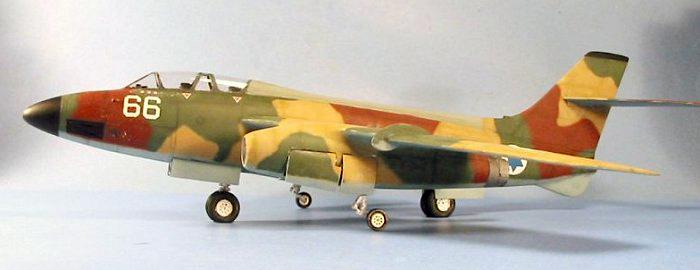
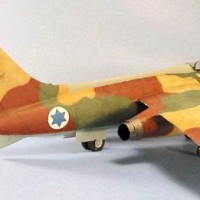
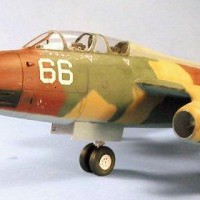
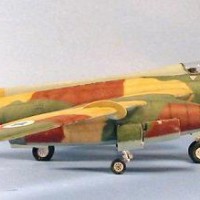
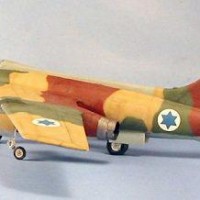
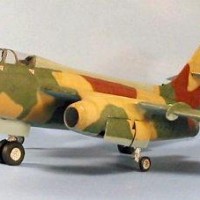

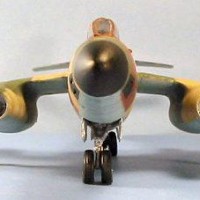
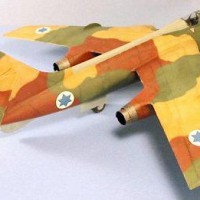
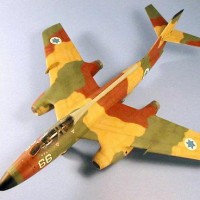
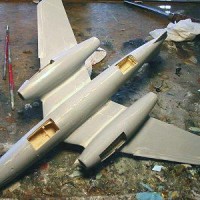
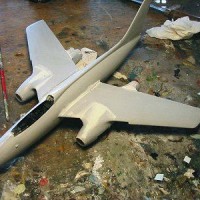
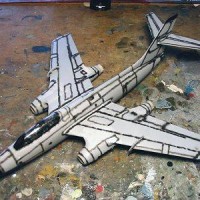
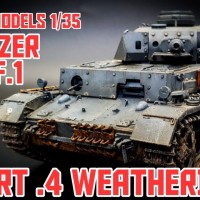
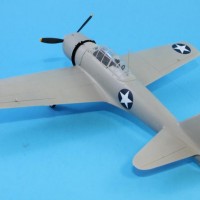
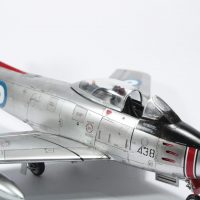
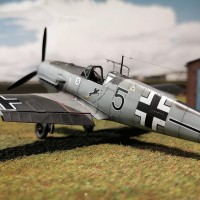
Thanks Tom for the very informative article on this aircraft. It sure is an ungainly looking aircraft. All Fonderie Miniature kits are a battle to finish. You sure did a really amazing job on this one! Well done!
I have to admit I've never heard of that manufacturer OR that aircraft. And after reading your scathing review, perhaps it's just as well I remain ignorant of its' existence. On the other hand, without the background you provided, I'd have probably said "nice build" - on second thought, I WILL say it. Nice build, TC.
A victory of persistence over sanity.
I tend to have my doubts as to whether either of us have been accused of sanity.
LOL
WOW nice rare subject. Thanx for the write up. Very informative and really nice job on a tough model!
I'm with Craig here, Tom. Your report provided me with yet another "new" aircraft to learn about. You sure made a great silk purse out of THAT sow's ear! Well done and kudos on another interesting history lesson. This plane greatly reminds me of a Soviet aircraft, the YAK 28 Firebar.
It's interesting how "styles" can show up in industrial design. A designer gets a set of specifications for overall performance, and frequently two different guys will find a similar answer. It's especially interesting artistically, where you have two different teams that knew nothing of the other's existence.
In biology Convergent evolution -
In evolutionary biology, convergent evolution is the process whereby organisms not closely related (not monophyletic), independently evolve similar traits as a result of ... Bats,Birds and Bugs all have solved the problem of flight.
Replace organisms with a/c and designers.
I am reminded what the U.S. did to the Canadian CF-105 Arrow project when they sold the Canadian government reconditioned Voodoo's F-101s. The Canadians destroyed all of the air frames and tooling . Avro collapsed. The a/c was said to be excellent but, expensive. Why the government didn't do further testing or save an air frame for history and Canadian pride ...
Same for Jack Northrops YF-35 and the YF-49, the flying wing bombers all of the air frames where destroyed after testing. Many of them at the factory.
The Flying Wings were all destroyed per Air Force order when the B-36 was confirmed over the B-49. I'm sure it was entirely coincidental that Stuart Symington, the Secretary of the Air Force, had come to that position from being CEO of Consolidated Aircraft. Those sorts of actions are only undertaken for solid, serious reasons. (/snark)
I've had my eye on a Vautour for awhile - Special Hobby and Azur both have 1/72 kits. I hadn't really known much about the aircraft, so found your article very interesting and engaging. I love the IDF air force paint scheme, and yours wears it well! Nice build (even from a dodgy kit!).
That's likely the same kit with maybe some resin parts differences. It would have to be better than F-M.
Fonderie kits have the worst reputation, and justly so, for being hard to build, though they deliver “orphan” or much overlooked subjects. I can only recall seeing this kit build by a fellow French modeler who, not only build the thing, but actually did an outstanding model out of it. Your model also goes in that category, rarely seen but outstanding model to behold.